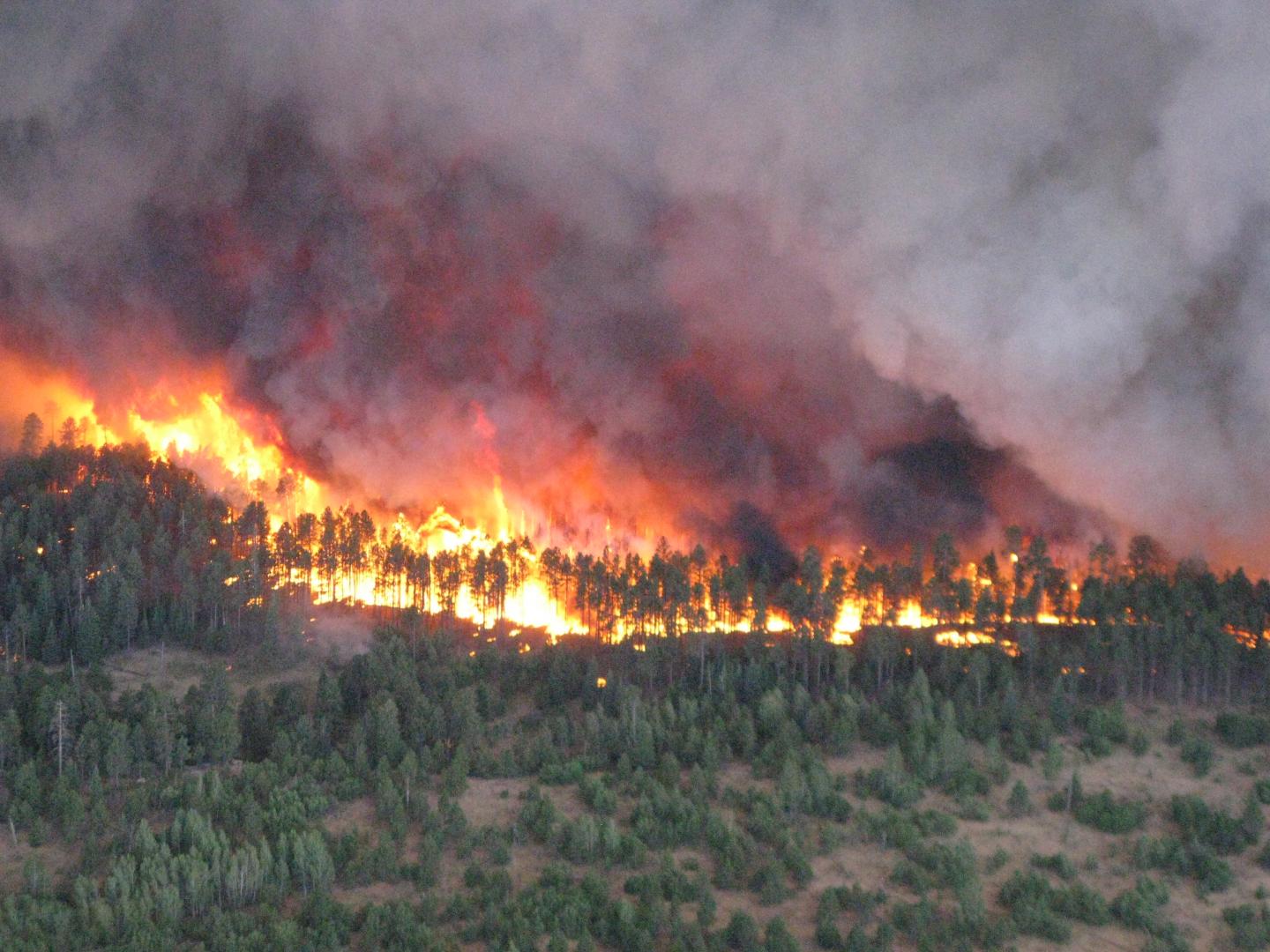Jay Coghlan, executive director of the nonprofit Nuclear Watch New Mexico, said the lab puts most of its attention on producing nuclear weapons and neglects forest maintenance, despite the disastrous Cerro Grande Fire that destroyed dozens of its structures.
“Nuclear weapons above all,” Coghlan said.”

Los Alamos National Laboratory has failed to properly manage its forested lands, increasing the threat of wildfires at lab sites and surrounding areas, according to a federal watchdog.
The lab has not thinned trees or cleared forest debris from many wooded areas, nor has it maintained service roads to ensure safe passage for firefighting crews, boosting the potential for “devastating wildfires” like the Cerro Grande Fire in 2000, the U.S. Energy Department’s inspector general said in a strongly worded report released this week.
The report criticized the lab’s main contractor, Triad National Security LLC, for not following fire management plans and not documenting required yearly activities to prepare for and prevent possible wildfires at the site.
“Our review found that activities designed to reduce the impact from wildland fire had not been fully implemented at the Los Alamos National Laboratory in accordance with site plans,” the report said.
The report comes as the federal Drought Monitor shows Los Alamos County and much of the state as being in exceptional drought — the most severe condition — which raises the risks of wildfires.
Lab officials said in an emailed statement they are working to reduce wildfire risks on the campus and have begun implementing recommendations made in the report.
“LANL has an aggressive approach to wildfire management on its 39-square-mile campus, including thinning of vegetation along access routes, making improvements to fire access roads and the recent removal of thousands of trees downed by wind storms,” a lab spokesman wrote.
Most of the lab’s property is undeveloped wooded land that provides buffer zones for research and testing projects, particularly the lab’s nuclear weapons program, the report said.
Crews haven’t thinned trees and vegetation as much as they should, making it more likely for high-intensity crown fires, which burn through forest canopies, to occur during a blaze, the report said.
“Crown fires are catastrophic fires that spread quickly through the crowns of trees in dense forests,” the document said. “These fires are very hot, burn deeply into the soil and are incredibly dangerous and expensive to suppress.”
In Los Alamos Canyon, inspectors estimated there were 400 to 500 trees per acre, where 40 to 50 trees would be the ideal amount — and the danger was compounded by one section tainted with radioactive materials that, if burned, would pose environmental and public health risks.
The risk of crown fires in the canyon is of concern because they could threaten several “mission-critical” facilities located on the canyon’s rim, the report said.
While fire breaks have been created near those buildings, crown fires can jump human-made barriers and natural ones, such as canyons and rivers, just as the Cerro Grande Fire did, the report said.
In addition, crews haven’t cut vegetation below some power lines, a situation that led to a 2019 wildfire when an overhead line broke and fell on brush.
A number of service roads have been maintained to “primitive standards,” allowing four-wheel-drive vehicles to travel on them but not giving fire crews safe passage or places to turn around, according to the report.
Tom Ribe, an author and public lands advocate, said the report overhyped wildfire threats to the lab’s concrete-shielded buildings but gave legitimate criticisms about poorly maintained forests and roads.
“The lab has never been concerned about forest ecology or wildfire risks on its lands,” Ribe said.
Crews should remove skinny trees, such as junipers and young ponderosa pines, in the denser forests, clean up pine needles and other flammable debris, and do controlled burns in areas that don’t have ordnance strewn about from explosives testing, Ribe said.
They also should clear trees and vegetation around buildings and dig trenches, especially around facilities containing nuclear materials, Ribe said.
Greg Mello, executive director of the nonprofit Los Alamos Study Group, said he was concerned the lab might overcut its forests to eliminate any fire risk to its future production of nuclear warhead triggers.
“Yes, one can fireproof a forest by cutting nearly all of it down,” Mello said. “Yes, tree density is an issue. But it is not so simple as portrayed here. Wildlife need cover.”
Jay Coghlan, executive director of the nonprofit Nuclear Watch New Mexico, said the lab puts most of its attention on producing nuclear weapons and neglects forest maintenance, despite the disastrous Cerro Grande Fire that destroyed dozens of its structures.
“Nuclear weapons above all,” Coghlan said.
